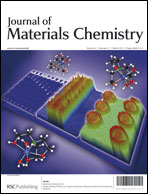An original and simple method for promoting mobility sensitivity of carbon nanotubes (CNTs) to an external stress field in polypropylene (PP) matrix was developed. In particular, an interfacial melt reaction initiated by free radicals were used as a tool to prepare PP/CNTs nanocomposites. The presence of tetrakis(phenylmethyl)thioperoxydi(carbothioamide) (TBzTD) increased the interfacial reaction between the PP chains and the CNTs. In addition, the grafted TBzTD to PP backbone could form a physical interaction with CNTs via a π–π interaction. In this case, the CNTs were not only well dispersed in the PP matrix during melt-mixing, but also the mobility of dispersed CNTs showed a strong responsive ability to the external stress field in the resultant nanocomposites. As a result, the orientation of CNTs was easily induced in the PP matrix under a weak stress field, such as mold pressing or injection molding. Further research showed that the strong mobility sensitivity of CNTs to an external stress field resulted from a synergistic effect of the physical interaction and chemical linking between CNTs and PP chains. As expected, the toughness of the PP/CNT nanocomposites was dramatically improved when compared with neat PP according to a notched Izod impact test, due to the strong sensitivity of the CNT mobility to an external stress field.

You have access to this article
 Please wait while we load your content...
Something went wrong. Try again?
Please wait while we load your content...
Something went wrong. Try again?


 Please wait while we load your content...
Please wait while we load your content...